Maintenance of AT
AT (automatic transmission) is a device that is less prone to failure. If abnormality occurs, traveling becomes difficult. I would like to check regularly. However, there are cases where level gauges for checking ATF (automatic transmission / fluid) are not provided depending on the type of vehicle. In the case of such a vehicle type, it is only necessary to sense a sign of a trouble from a shifting state during running.
What is AT (Automatic Transmission)
AT (Automatic Transmission) is an apparatus that automatically performs gear shifting according to accelerator operation and vehicle speed. Torque converter and transmission are matched for gear shifting. A torque converter is a type of fluid clutch, which is capable of increasing the torque (rotating force) in addition to not transmitting the engine rotation to the transmission while the vehicle is stopped, smoothly transmitting the rotation, and the like. The transmission changes the combination of gears, but it switches by hydraulic pressure. All these operations are electronically controlled, and cooperation with the computer of the engine is also done.
There are cases where troubles occur due to abrasion of the parts in the transmission as long as it is used, but ATF (Automatic Transmission Fluid) is important for normal maintenance. The ATF is used not only to lubricate gears in the transmission, but also to transmit hydraulic pressure to change the combination of gears, and it is also used for transmission of force within the torque converter. For that reason, it has been considered important to maintain the amount and state of ATF in maintenance.
In the past, ATF level gauges were provided in the engine room so that anyone can easily check the quantity and condition of this ATF, but in recent years there are an increasing number of models not equipped with level gauges.
For vehicles not equipped with level gauges, although not entirely impossible, maintenance by DIY is getting harder. I think that it is better to consult with manufacturers, dealers and maintenance factories as soon as you feel abnormalities in the speed change condition on daily driving.
ATF life span
Since the advancement of deterioration of ATF is slow, automobile manufacturers often do not designate a replacement timing. Actually there are often no troubles at around 100,000 km, but replacing an ATF that has deteriorated to a certain extent can reduce the shift shock or improve the response. Even in a repair shop, if the condition of AT is bad, in many cases, ATFs are first exchanged and the situation is often seen, so trouble can be solved.
It is better to change the ATF at regular intervals, but if you replace the ATF, the dirt stuck by the new station will float up and flow out and clog the hydraulic path and cause trouble. Therefore, if you replace regularly it is better to replace it. There are many cases where restrictions are set by the travel distance after replacement. Depending on the shop, it seems that there is a maximum limit of 50,000 km running and 70,000 km running.
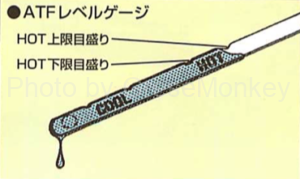
Measure the amount of ATF
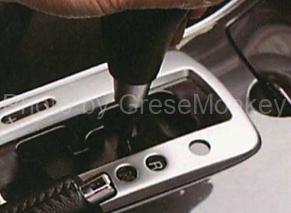
Engage the engine to idle or run and warm up the engine to warm the ATF. Stop while running the engine in that state, operate the AT select lever while stepping on the brake pedal and hold it for 1 second while keeping it in each range such as R, D, N. (This operation circulates the ATF throughout the AT) When shifting to all ranges return to the P range.
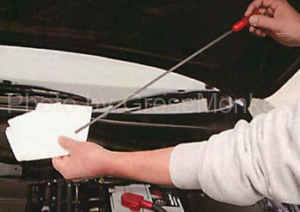
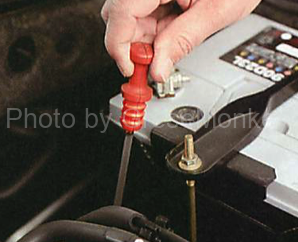
Remove the ATF level gauge in the engine room, wipe off the ATF attached to the tip of the gauge with a clean cloth or paper, and return the level gauge to the original level again. Be careful not to get dirty on the gauge itself at this time.
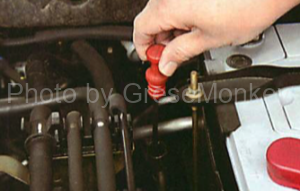
Insert the gauge securely and surely return to the original position, remove the level gauge again. As ATF adhering to the tip of the gauge flows, the measurement result becomes difficult to understand, so slowly pull it out.

See how far the ATF is attached to the tip of the gauge. ATF is adequate if it sticks between the memory of the upper limit and the lower limit.
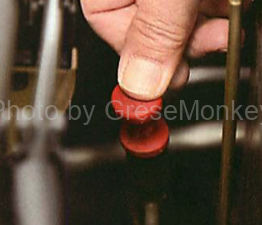
When the measurement is completed, return the level gauge to the original position again. Also at this time also set securely to return to the original position securely.
Check ATF leakage
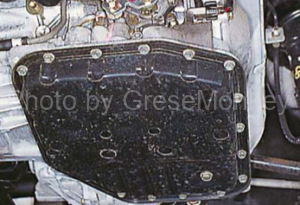
Leakage check of ATF is done from below. Liquid leakage tends to occur at the mounting part of the oil pan, so check for liquid bleeding and dirt sticking to the liquid.
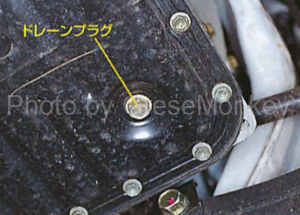
Liquid leakage is likely to occur also from ATF drain plug (outlet). Check for liquid bleed around the plug. You may try running a wrench to see if it is loose. Also, if bleeding is seen around the oil pan, it is also good to tighten the bolts attached around the oil pan evenly and gradually.